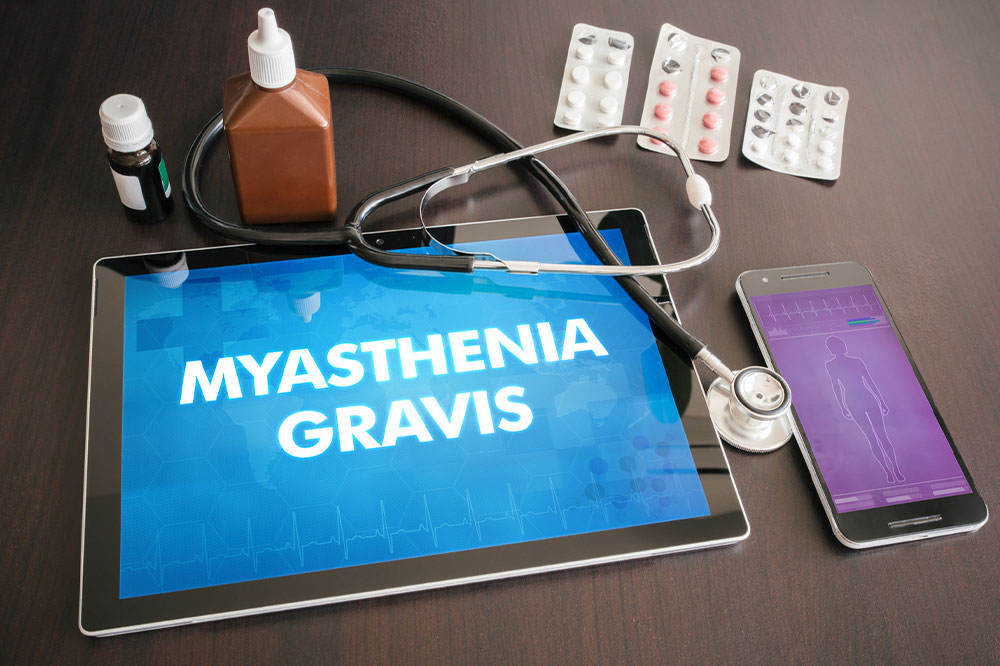Myasthenia Gravis – Causes, Symptoms, and Prevention Methods
Myasthenia gravis (MG) is a disorder that causes weakness in skeletal muscles. According to the Myasthenia Gravis Foundation of America, it is the most common primary disorder of neuromuscular transmission. It happens when the communication between the nerve cells and the muscles becomes impaired and prevents crucial muscle contractions from occurring. Although it often goes undiagnosed, this rare condition reportedly affects 20 of about every 100,000 people in the country.

What are the symptoms of myasthenia gravis?
The main symptom of MG is weakness in the voluntary skeletal muscles. This weakness is a result of the lack of muscle contraction caused by an improper response to nerve impulses. It tends to get worse with more activity and improves with rest. Other symptoms may show up differently on various body parts, such as:
Eyes
Overall weakness in the eye muscles can lead to the dropping of the eyelids, and double or blurred vision.
Face
MG may cause changes in facial expressions, and/or facial paralysis.
Throat
Those experiencing MG symptoms in the throat may face trouble during talking, difficulty breathing, swallowing, or chewing, a hoarse voice, or a weakness in the neck, making it difficult to hold the head up.
Chest
MG symptoms in the chest can pose severe and life-threatening risks, leading to respiratory failure, caused by weakness in the diaphragm and chest muscles that may lead to a myasthenic crisis.
Arms and legs
MG can also affect the arms and legs, leading to fatigue, weakness in the fingers, hands, and arms, overall weakness in the legs, and problems walking up stairs or lifting objects.
Everyone with MG need not necessarily experience every symptom. The severity of weakness, too, can differ day-to-day. If left untreated, it typically increases over time.
What are the causes of myasthenia gravis?
Antibodies
When the immune system produces antibodies that block or destroy the muscle’s receptor sites for acetylcholine, a neurotransmitter, there is a reduction in the nerve signals received by the muscles, causing MG. The blocking of muscle-specific receptor tyrosine kinase (MuSK) and lipoprotein-related protein 4 (LRP4) can also lead to the development of myasthenia gravis.
Thymus Gland
The thymus gland is a part of the immune system that maintains the production of antibodies that block acetylcholine. In healthy adults, this gland is quite small in size. However, in some, it is abnormally large and can lead to the development of MG. Tumors in the thymus gland (thymomas) can also lead to this disease.
Other causes
Mothers with myasthenia gravis may give birth to a baby with the disease (neonatal myasthenia gravis). Babies can recover within two months after birth if treated promptly. Some children may also be born with a rare form of myasthenia gravis, called congenital myasthenic syndrome.
Other factors that can worsen MG include fatigue, illness or infection, surgery, stress, pregnancy, menstrual periods, and certain treatments like beta-blockers, some anesthetics, and antibiotics.
How is myasthenia gravis diagnosed?
MG is diagnosed based on symptoms and tests. A common way to check for MG is to test how one responds to certain treatments like anticholinesterase. Other common methods include:
Blood tests
These tests look for antibodies that may be present in those with MG.
Genetic tests
To check for conditions that run in the family, a genetic test may be advised.
Nerve conduction studies
Repetitive nerve stimulation tests may be used to diagnose MG.
Electromyogram (EMG)
EMG measures the electrical activity of a muscle, and can detect abnormalities caused by diseases or neuromuscular conditions.
What complications can Myasthenia Gravis cause?
While the complications of MG are treatable, they can be life-threatening if ignored.
Myasthenic crisis
This is a serious condition that occurs when the muscles controlling breathing become too weak to work. Emergency assistance and mechanical assistance with breathing are required. Certain treatments and blood-filtering therapies can help people breathe on their own again.
Thymus gland tumors
Some people with MG may develop tumors in the thymus gland. While most of these tumors are malignant, they need to be checked regularly as they can become cancerous.
Underactive/overactive thyroid
People with MG are more likely to have an underactive or overactive thyroid. The thyroid secretes hormones that regulate metabolism. An overactive thyroid can lead to difficulty dealing with heat and unexplained weight loss, and an underactive thyroid can result in difficulty dealing with cold and unexplained weight gain.
Autoimmune conditions
People with MG are more likely to have autoimmune conditions like rheumatoid arthritis or lupus.
How is myasthenia gravis managed?
Specific treatment options for MG depends on age, overall health and medical history, and the degree of severity. While there is no cure for the disease, the symptoms can be controlled by:
Immunosuppressants
Anticholinesterase treatments may be given to suppress the immune system’s response.
Thymectomy
Surgical removal of the thymus gland can help reduce symptoms for those who do not have any cancerous growth in the thymus.
Plasmapheresis
This procedure involves the removal of abnormal antibodies from the blood, and replacing them with normal antibodies from donated blood.
Immunoglobulin
Immunoglobulin, a product of blood, is given intravenously to help reduce the immune system’s attack on the nervous system.
Conclusion
Myasthenia gravis is a lifelong medical condition, and early diagnosis is key for managing it. The goal of treatment is to increase general muscle function and prevent swallowing and breathing problems to live a longer, happier, and healthier life.